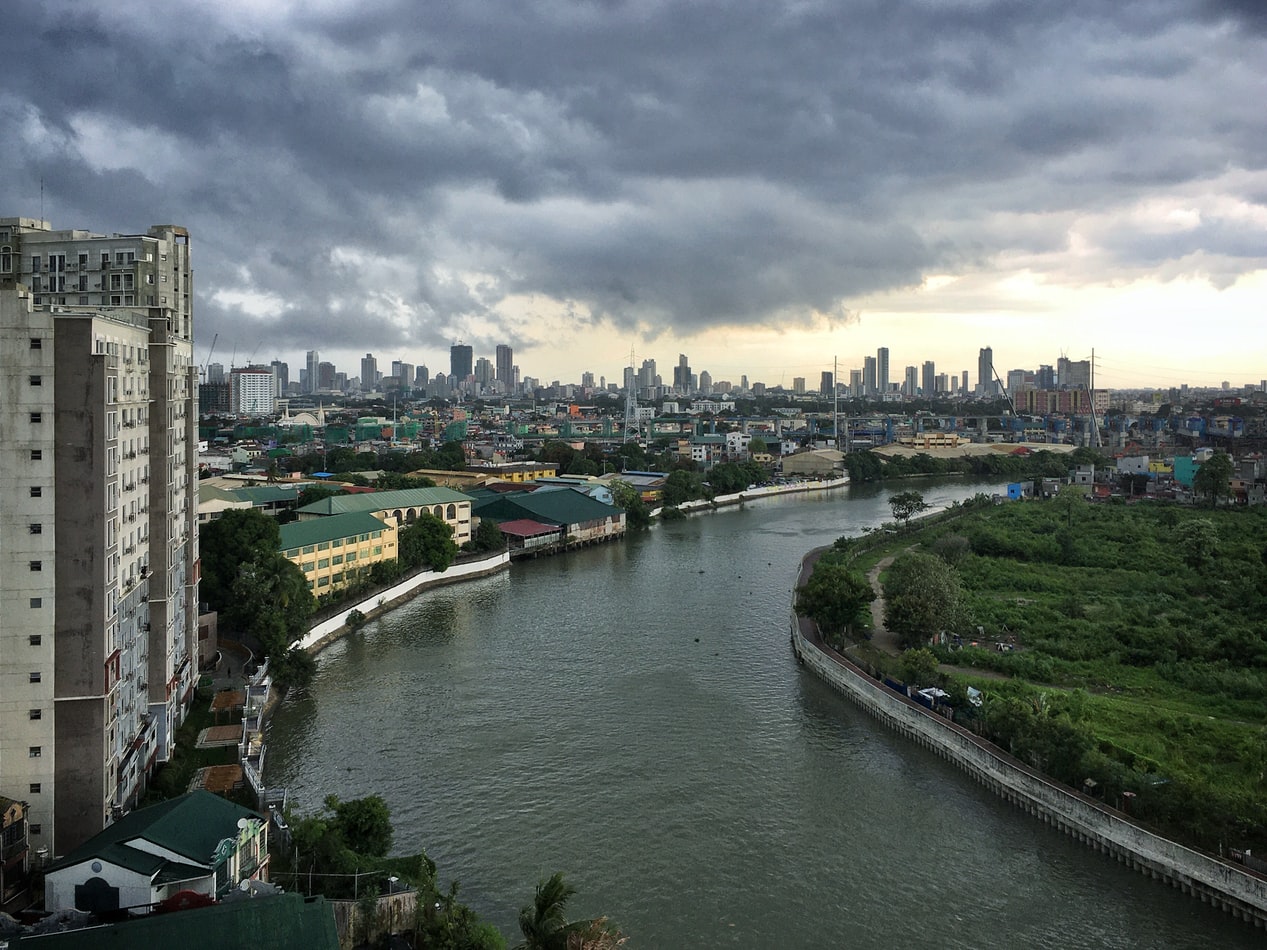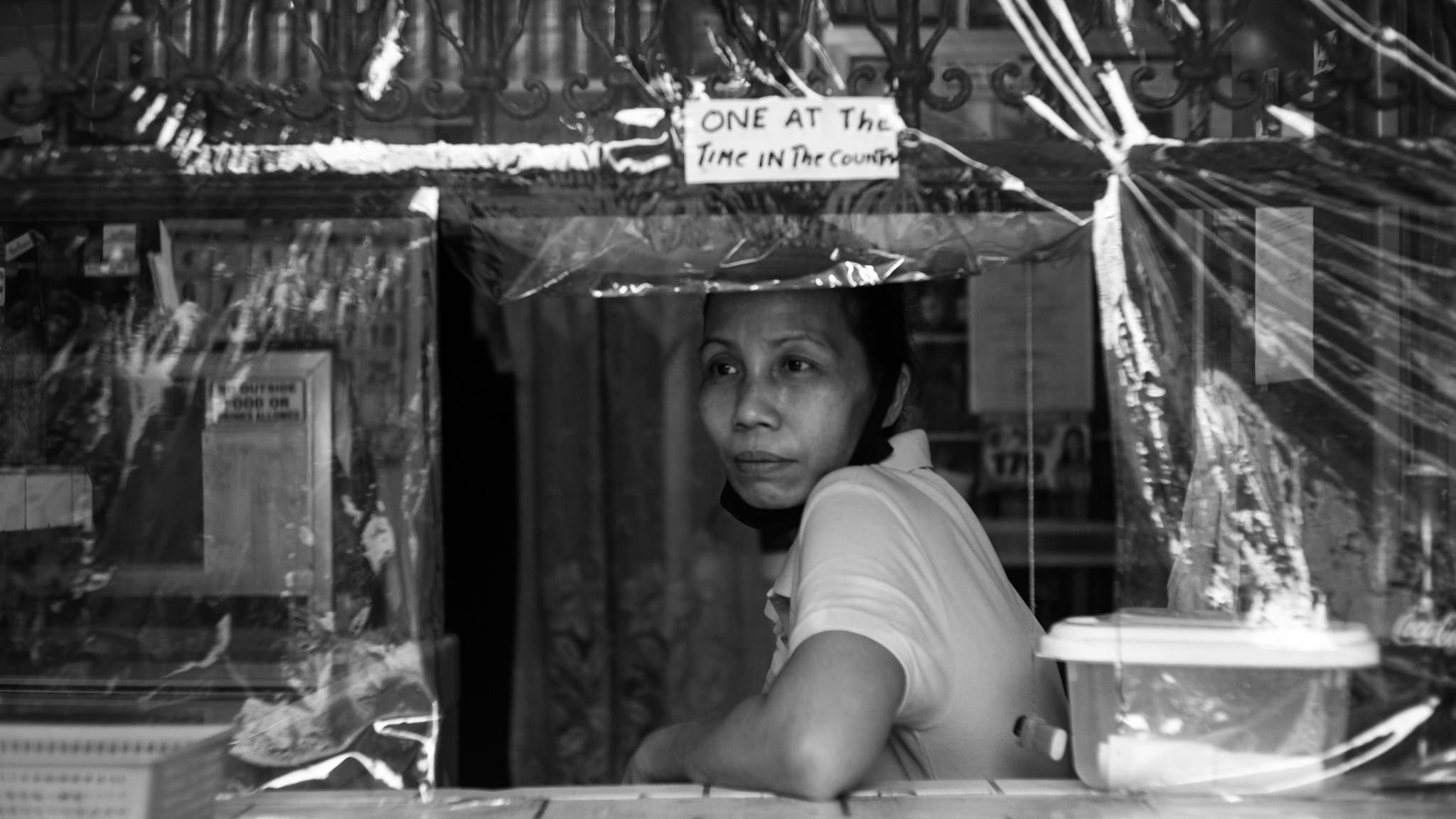“There is an unprecedented loss of livelihood, with informal workers and daily wage earners suffering greatly. For our women research partners from Escolta, Manila and other vulnerable sectors, the struggle to make a living was magnified a thousandfold during the pandemic.”, Tessa Maria Guazon, an educator at the Department of Art Studies at the University of the Philippines Diliman.
_______________________________________________
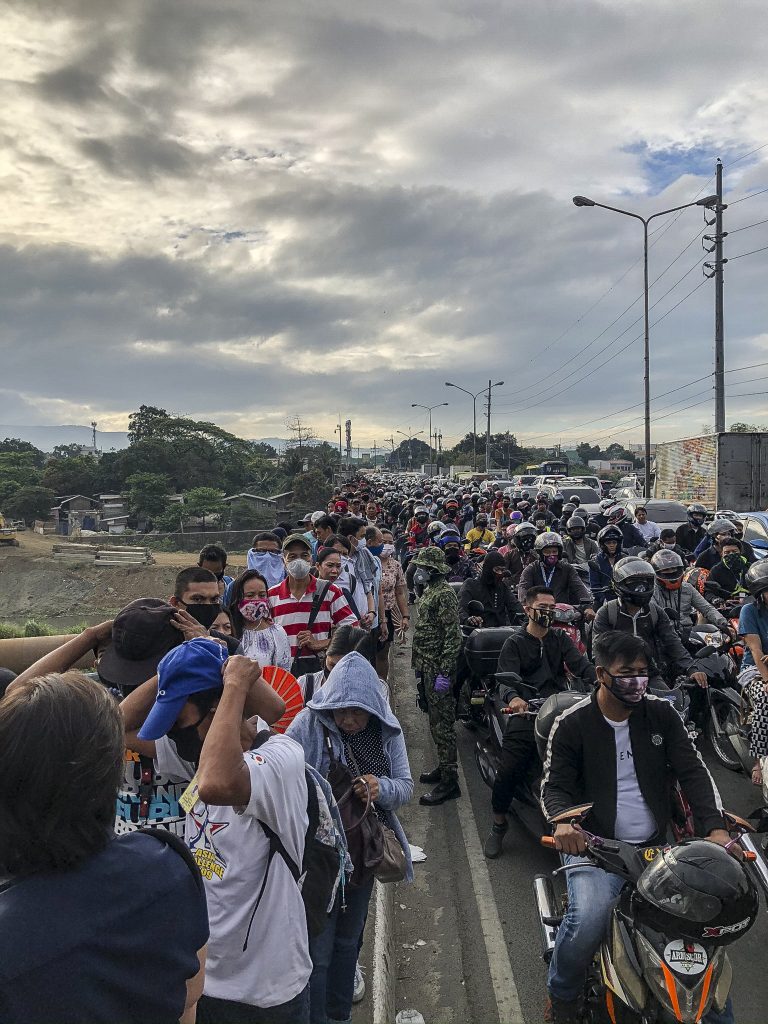
Figure 1: Queues during the quarantine, Metro Manila Philippines. Veejay Villafranca
The Philippines was under a longer lockdown than most, even rivalling that of Wuhan province in China. A public health emergency was declared by Philippine President Rodrigo Duterte last 8 March with the lockdown taking effect in Metro Manila and the rest of Luzon island on 16 March. As of the end of September, COVID-19 cases in the Philippines breached the 300,000 mark, with new recorded cases ranging between 2000 to 3000 daily in recent weeks. Duterte recently declared the country under a yearlong state of calamity from 13 September this year until 12 September 2021 through Proclamation No. 1021. According to the President, extending the state of calamity will “afford the national government as well as local government units ample latitude to continue utilising appropriate funds, including the quick response fund” in its response to the public health crisis.[1] The president was granted special powers to reapportion the 2020 national budget through the Bayanihan to Heal as One Act. The 2021 proposed budget of 4.506 trillion Philippine pesos is meant to bolster government response to the public health crisis.
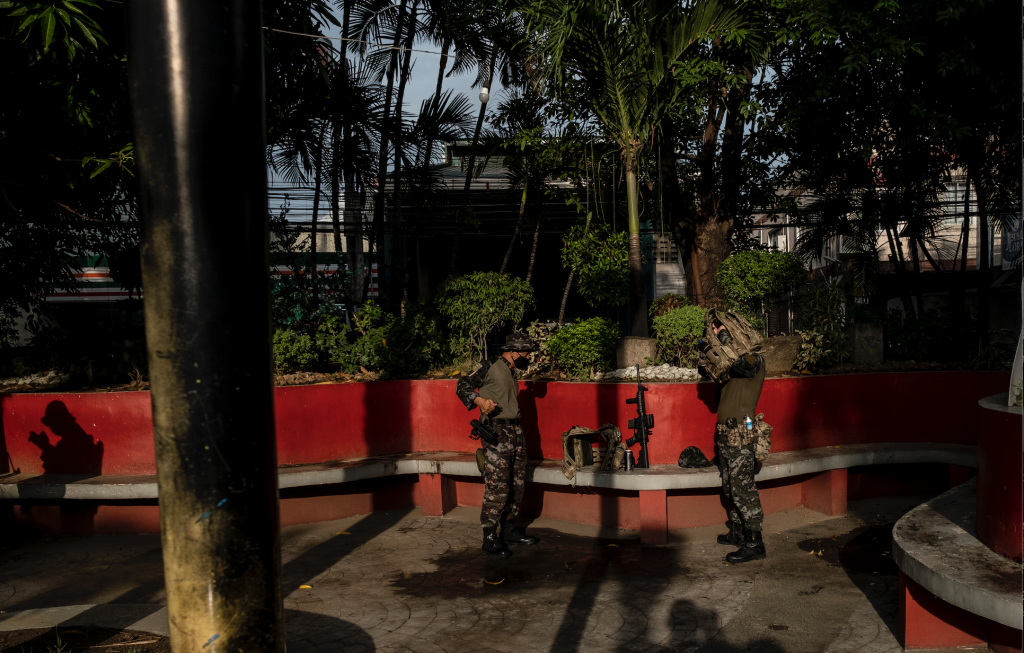
Figure 2: Police and military patrol Metro Manila streets during the quarantine. Veejay Villafranca.
Government response to the crisis is marred by equally worrying developments: the misappropriation of funds by officials of the Philippine Health Insurance Corporation (PhilHealth, the state-run health insurer); the non-renewal of franchise and subsequent closure of ABS-CBN media, the largest in the country; the spate of activist killings; the arrest of citizens protesting the government’s feeble response to the pandemic and the restrictions imposed on local media critical of the government. Metro Manila and cities across the country were placed under varying degrees of quarantine: community quarantine, enhanced community quarantine (ECQ), and modified enhanced community quarantine (MECQ). The government Inter-Agency Task Force for the Management of Emerging Infectious Diseases (IATF) in its 31 August 2020 resolution adopted a localised approach to the quarantine, with Luzon and other places in the regions under Modified Enhanced Community Quarantine (MECQ). Last July 2020, the Department of Health had to address the glaring lag in the tally of cases and used the terms ‘fresh’ and ‘new’ to refer to cases whose tests were in process and whose results are yet to be released. The crises in food and health care provision were aggravated by a prevalent crisis in communication and governance. All these make the rickety stage on which the struggles of disadvantaged communities in Metro Manila continue to unfold.
There is unprecedented loss of livelihood, with informal workers and daily wage earners suffering greatly. For our women research partners from Escolta, Manila and other vulnerable sectors, the struggle to make a living was magnified a thousand fold during the pandemic. Escolta used to be a thriving commercial area until it became derelict in the 1970s when Manila was overshadowed by rising commercial districts in the city. The late 1990s saw efforts in reviving and revitalising Escolta. There were campaigns to conserve and reuse historic buildings in the area. There were also plans in the early 2000s of Escolta adopting a mix-use development plan, which did not materialise. In the mid-2000s, Escolta and other areas in Metro Manila saw a revival through art and cultural events, trendy shops, hip coffee bars and restaurants, bazaars, and street parties. In Escolta, these events or happenings centred at the historic First United Building, which houses spaces for creatives and start up businesses. It is home to 98B, an arts initiative that was instrumental in drawing attention to Escolta through various artistic programs and projects. These gentrification efforts attracted visitors to Escolta, mostly young people who live in other parts of sprawling Metro Manila.
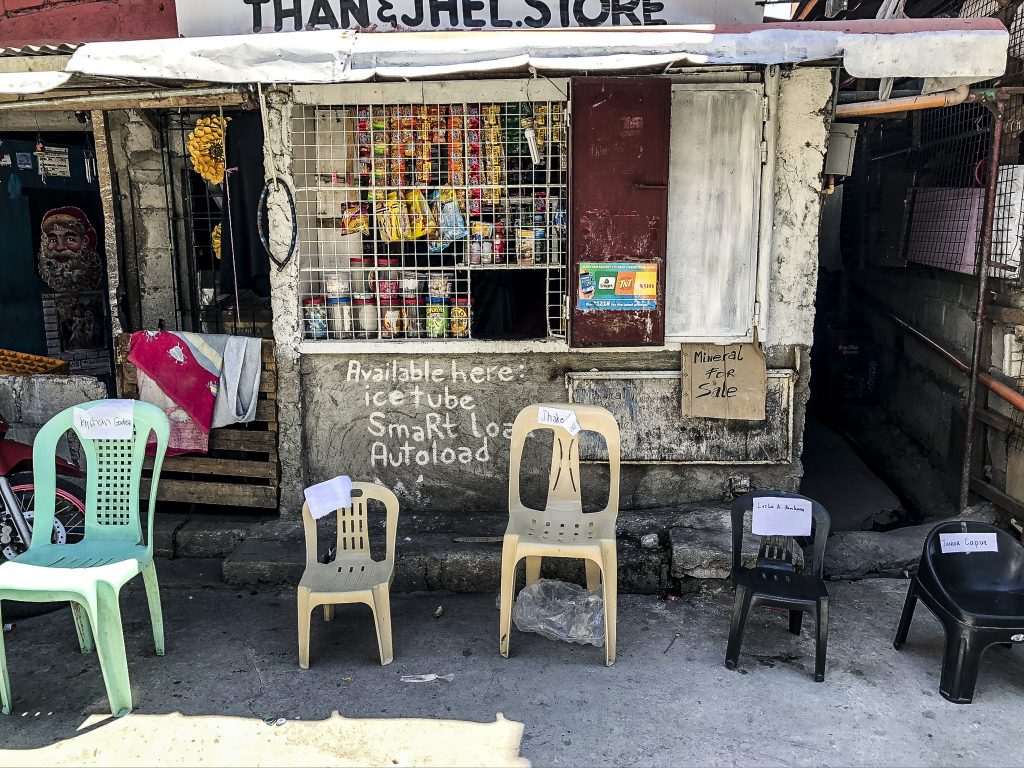
Figure 3: Plastic Chairs at a storefront for receiving food packs from the local government. The distribution of food packs were delegated to barangays. Veejay Villafranca.
Alma Quinto, Nathalie Dagmang and I have worked closely with our women partners on the Manila case study for the Southeast Asia Neighbourhoods Network (SEANNET) research project. The Manila project for SEANNET explored the links between art and urban development. We were interested to know how informal settlers adapt to changes in the urban fabric. Foremost, we wanted to explore how understandings of ‘being neighbourly’ or ‘neighbourliness’ are realised in a context where housing or property is absent. How is the neighbourhood constructed through structures of relation among members of informally organised communities like the homeless and the itinerant vendors of Escolta? From 2017 to early 2020, we worked with a core group of women partners who were instrumental in realising our workshops and research activities. Our research partners make a living from odd jobs and selling repacked food items at makeshift stalls and carts on the streets. Their meagre earnings are mostly for food expenses. The city-wide lockdown following the announcement of the pandemic heightened food insecurity for them and their families.

Figure 4: Jeepneys have not been allowed to play their usual routes, many drivers have lost their income. Veejay Villafranca.
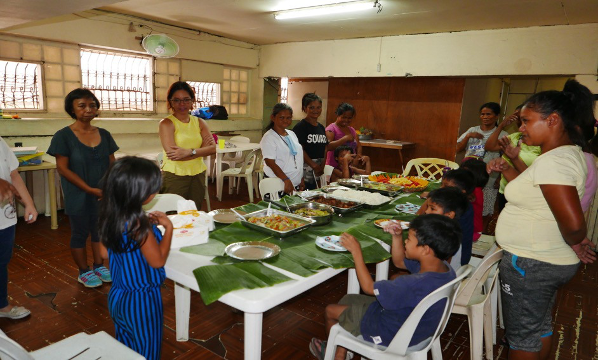
Figure 5: Shared lunch during our structured cookout at a rented upper floor of a cafeteria in Escolta, May 2018. Eric Guazon.
Secretary of the Department of Agriculture William Dar confirmed that the country has sufficient food supply for the year until the first quarter of 2021. He underlined the Department’s implementation of the ‘Plant, Plant, Plant’ program to boost food production. Food security and provision however, are matters not easily resolved by these government programs, more so during the lockdown. Last 1 April 2020, residents from Barangay Bagong Pag-asa Sitio San Roque in Quezon City were violently dispersed with 21 arrested by city police. [2] They demanded the immediate release of food aid from the local government. Police on the other hand, claimed they violated restrictions on public gatherings by staging a protest without a permit. Six jeepney drivers were jailed last June 2 in Caloocan City. They rallied for the renewed operation of jeepneys in Metro Manila and the immediate provision of aid by the government. Jeepney drivers lost their wages due to the prolonged suspension of public transportation during the lockdown. Several of them resorted to begging, imploring passersby and private vehicles for donations. A March 2020 news article cites 41,000 arrests by the Philippine National Police (PNP) for violation of enhanced community quarantine (ECQ) regulations. The situation is widespread, with a host of informal workers and daily wage earners severely affected by the enforced lockdown and ensuing curfews in the city. Fear and distrust of local police are prevalent among informal settler communities. These concerns often came up in discussions with our women partners: recollections of when belongings were carted off during raids, when children were brought by DSWD (Department of Social Work and Development) staff to holding centres like Boystown, and livelihood was greatly dependent on illegal fees or ‘butaw’.
Our women partners make a living by selling candies, instant noodles, and packed for retail food items. Two of them ferry passengers across Escolta, Quiapo and Binondo in their pedicabs. Sol who is a busker also has a thriving makeshift store under a bank’s awning where she and her son have sheltered for years. Brenda and Susan make a living by selling fruits, drinks and peanuts. These earnings are augmented by their partners’ and children’s wages. We knew of transitions in their lives in the years we worked with them: two have moved into rented spaces, however makeshift this was a significant departure from living inside a pedicab or the streets. One lost a child and found a new partner; another had her son’s kidney stones surgically removed and one of the women’s husband recovered from a lingering lung illness. Escolta vendors rely heavily on their ‘suki’ or regular customers for daily earnings, which average between 150 to 300 Philippine pesos (3 USD or 2.4 GBP to around 6 USD or 4 GBP) on a good day. Colleague Nathalie reached out to them the day after the lockdown was imposed in Metro Manila. Several of them replied with a sense of panic: the deserted streets was an ominous vision. Empty streets only meant one thing: little or close to no earnings during or even beyond the lockdown.

Figure 6: Timeline workshops with our women partners, designed by Nathalie Dagmang, May 2018. Eric Guazon.
The distribution of food aid (or food packs) promised by the national government was coursed through local barangays [3]. Our women partners waited for these to arrive but they had to leave the barangay hall due to the strict enforcement of curfew during the quarantine. Nathalie and I rallied to raise funds for food relief through social media primarily through the campaign launched by the civil society organisation People for Accountable Governance and Sustainable Action (PAGASA). Food survival packs cost 700 Philippine pesos (12 USD or 11 GBP) and were meant to tide them over during the first few difficult weeks of the metro wide lockdown. Reflecting on her experience of mobilising the distribution of the food packs, Nathalie noted the numerous challenges of organising the relief drive. These included arbitrary rules concerning checkpoints and curfews, and much later the official release from the police or the military required by local officials for transport of donations or aid to communities outside Metro Manila. These food provision networks include community kitchens (Sitio San Roque’s Kusinang Bayan is one such example), the private initiative of chefs (Waya Araos-Wijangco of Gourmet Gypsy Cafe transformed her usually bustling kitchen into a food provision hub for front liners and healthcare workers) and volunteer groups like Art Relief Mobile Kitchen which cooks and provide food for communities affected by disasters. Chef Waya also drafted guidelines for community kitchens.[4] The lockdown gave rise to citizen initiatives propelled by social media where public calls for contributions, donations and volunteer work were fielded. They covered a vast array of needs: transportation and lodging for healthcare workers, food relief, direct purchase of harvest from farmers, translating health and related advisory into local languages, amongst many.
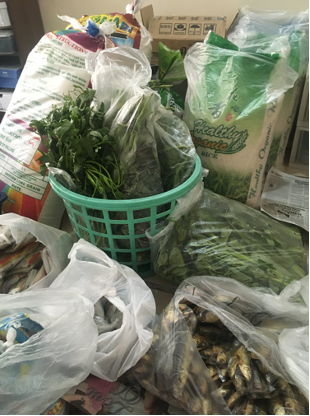
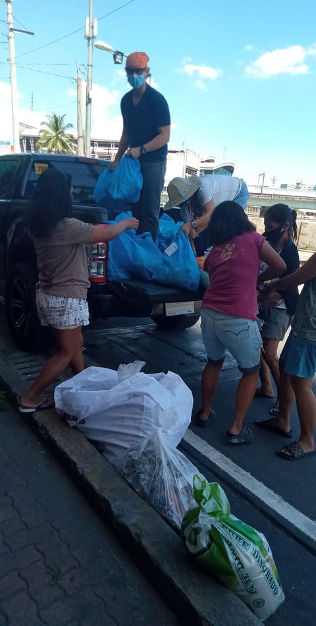
Figure 7a and 7b: Distribution of food packs at Escolta. Richard Quan and Nathalie Dagmang
The food supply of rice, vegetables, and canned goods were delivered to Nathalie at no cost and were brought to Escolta through the efforts of another volunteer. Our women partners helped distribute them. Nathalie noted these were carried out ‘in the spirit of bayanihan’.[5] Environmental historian Greg Bankoff (2020) cites an even older understanding of bayanihan arising from a “ruthless struggle with an environment where going it alone is dangerous”.[6] How might we rethink the shared need to provide and sustain others during periods of crisis? How can we recuperate the notion of bayanihan when it has been deployed by the state in its aid efforts and co-opted in its insidious drive to curtail individual freedoms?
Our women partners from Escolta describe their life on the streets as ‘pamamangketa’: a means of survival and a manner of reciprocity that allowed them to live through everyday hardships. ‘Nangangalakal’ is making a living scouring garbage and repurposing refuse. During our often compelling sessions, they describe the difficulties they face everyday but they would always claim there is a way to live together and ‘be in common’: to be with another, to feel their pain and empathise with each other. They cite such attributes as ‘maabilidad’. ‘maparaan’, ‘madiskarte’ (creative and resourceful); ‘magaling makisama’, ‘marunong makisama’, ‘may malasakit’ (can relate well with another, feel for another). These life skills have to do with close observation, creativity, interdependence and shared concern.

Figure 8: A children’s workshop on nutrition and hygiene, organised with support from Museo Pambata (Children’s Museum), Roxas Boulevard Pasay City, February 2020. Eric Guazon.
Our engagement with our women partners from Escolta guided us to reflect on commonplace understandings of reciprocity and cooperation, specifically those shaped by daily struggles deeply rooted in the structural inequalities that pervade life in contemporary cities not only in Southeast Asia, but also in other parts of the globe. Perhaps, the vital life lessons we overlook and frequently ignore are those we need to relearn from people whose lives are in perpetual crises.
Footnotes
[1] Julie M. Aurelio, 19 September 2020. “Duterte extends PH state of calamity” in the Philippine Daily Inquirer, https://newsinfo.inquirer.net/1337240/duterte-extends-ph-state-of-calamity, accessed 24 September 2020.
[2] Sitio San Roque Barangay Bagong Pag-asa in Quezon City used to be home to 17,000 families, many of them migrant workers from the provinces. The government entered a joint venture with Ayala Land Corporation to develop the land they cleared and lived in. There were numerous demolitions in the area, with the most violent happening in 2010 and 2014. As of December 2018, only 6,000 families are left in Sitio San Roque.
[3] Barangays are the smallest political-administrative units in the Philippines.
[4] The guidelines were translated into Filipino by University of the Philippines colleague Eileen Narvaez.
[5] Dagmang, Nathalie. May 4, 2020. “Responding to Escolta’s Street Vendors: How do we provide for the economically vulnerable” in Bulatlat, https://www.bulatlat.com/2020/05/02/responding-to-escoltas-street-vendors-how-do-we-provide-relief-and-security-to-the-economically-vulnerable/, accessed 22 September 2020.
[6] Bankoff, Greg. 2007. “The dangers of going it alone” cited in “In Search of Bayanihan”, https://philartsvenicebiennale.org/2020/09/06/in-search-of-bayanihan/ accessed 22 September 2020.
* The views expressed in the blog are those of the authors alone. They do not reflect the position of the Saw Swee Hock Southeast Asia Centre, nor that of the London School of Economics and Political Science
* Parts of this post were initially presented at the ‘Bottom-up Resilience: Civil society response and marginalised publics during COVID-19 webinar organised by APRU Cities and Landscapes Hub and the Pacific Rim Community Design Network last July 2020.




